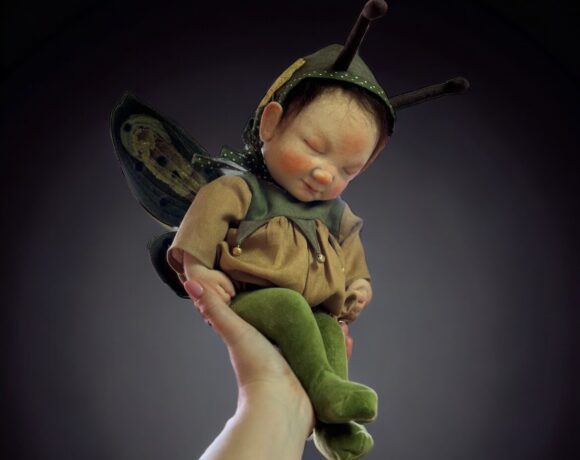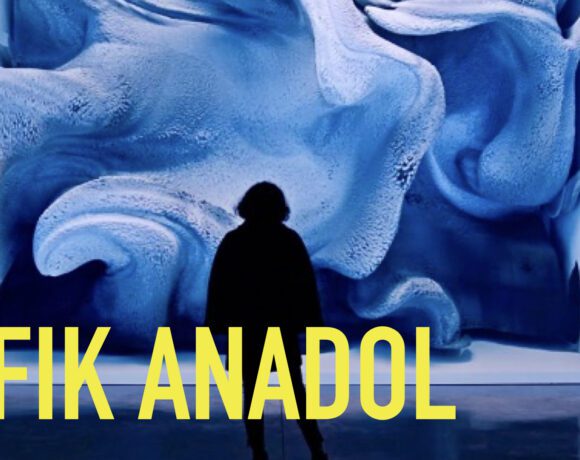Małgorzata Kaźmierczak, a Polish art historian born in 1979, in Krakow, has made significant contributions to the field of art criticism, particularly in the realm of performance art. With a Ph.D. in History, she has written numerous critical articles on contemporary art, offering insightful analyses and critiques of various performances. In 2024, she was appointed the new president of the International Association of Art Critics (AICA). Me as an International Board Member, in AICA, I am grateful to work alongside her and her new visions in shaping the future of the association.
1. Can you describe what are the most important principles and guidelines that are behind your cultural work? Are there any iconic books and articles that guided you through the art world?
I was raised in an environment that was totally uncompromising and where art was highly valued. At that time I was mostly guided by the stories told by artists. They shaped my ethical position. I’ve never treated art as a source of income and associated it rather with my critical position towards the surrounding reality. One of the most significant books that shaped my views though was Jacques Ranciere’s “Aesthetics as Politics,” which helped me understand the politics of art. Art in Poland before 1989 was supposed to be pure and free from politics, unlike the reality, which was controlled in every aspect by the state. Artists had in mind the way art was instrumentally used by the communist regime during the period of social realism, so they did not want to get directly involved in politics. This position followed Walter Benjamin’s statement: “Such is the aestheticizing of politics, as practiced by fascism. Communism replies by politicizing art.” Nevertheless, it was difficult not to understand the radical performances of the early 1980s in a political context. Jacques Ranciere’s essay helped me to understand this issue and align it with my previous intuitions. The first artivist actions in Poland took place after 2000. Then I started to read authors such as Gregory Sholette and Grant Kester (and their opponents, like Boris Groys or Claire Bishop). Probably Philip Auslander’s “Presence and Resistance: Postmodernism and Cultural Politics in Contemporary American Performance” and Boris Groys’ “Art in the Age of Biopolitics: From Artwork to Art Documentation” were important to me as a scholar specializing in performance art. But I have to say that lately I’ve read more about sociology and the theory of history than art history or theory.
2. What motivates you to write about art?
I believe it is our responsibility to keep it well described and documented before it vanishes. I mainly focus on ephemeral forms of art, so it is crucial to do it. Furthermore, I am a historian, and my PhD was about early medieval Ireland, so I have kept the perspective of a medievalist. We need to create sources; otherwise, no one will ever know about our work in a thousand years. I’ve been interested in the issue of the preservation and conservation (sic!) of performance art. There have been many projects trying to work out the correct methodology, but all come to the same point: we need critical texts, descriptions, and interviews with artists. Otherwise, we will just end up with myth-making relics, photos, and videos.
3. On your website, you stated that “The nature of performance art, which is an art with no rules, requires a great deal of creativity in its presentation, organization and the discussing of it”. From your point of view how can an artist gain creativity and break the academic rules for creating an artwork? What drew you to performance art as a curator?
My father is a performance artist, so I got engaged in the production, documentation, organization, curating, and eventually writing about this genre of art. I’ve been living with it for so long that I realized I can curate performance art without a lot of stress. I like the sense of uncertainty and the artwork that is being created in my eyes, which I cannot fully control. For me, it’s less stressful than having to decide about the arrangement of artworks in the gallery.
I use the word “genre” when talking about performance art in order not to use the word “medium.” Performance art uses many media. The academic tendency to define everything seriously limits the creative potential, which lies in the willingness to experiment. I know plenty of great teachers and artists who educated generations of great artists. What is characteristic is that they don’t treat performance as a defined kind of art with its own set of rules. This is reflected in their teaching practice. Unfortunately, many powerful personalities insist that they know what is and is not performance. I hope that young artists can resist that and go their own way, no matter what.

Photo by Adrian Kempa
4. Art is work; how can cultural professionals make the statement even bigger?
In the first decade of the new millennium, there was a huge debate about this in Poland. Artists declared a strike to protest not being paid by institutions. There is no doubt that artists need to get paid. It was the job of artists themselves to organize and exert pressure on institutions, and they have the means to do it, as the system wouldn’t work without them. Art criticism is in a worse position because it is still mostly treated as a hobby. We must challenge this. At AICA, we have been thinking about it intensively. I will organize a series of panel discussions about this topic. We will share our experiences and also positive practices that have been worked out in some sections, for example AICA France or AICA Catalunya.
5. How can a curator find their own critical voice? And also, how can a curator find a voice in a censorship art milieu?
It’s an interesting question. I have always avoided places where the critical voice is not welcome. In fact, I quit my job as a gallery director because of attempts at censorship. Sometimes I took risks, and the fear before was greater than the actual response. I learned not to be afraid. Censorship is like a toxic relationship. You don’t realize it is happening until you find yourself agreeing to something you never wanted. That’s why I’m speaking out about it loudly and would like to provide help and education so that everyone understands what is and what is not censorship, what our rights are, and how we should react to it. Together with the Censorship and Freedom of Expression Committee and Freemuse – an organization devoted to defending freedom of artistic expression – we will organize such webinars and write a toolkit for art professionals. Of course, sometimes the censorship shows as total destruction of culture – as is happening in Slovakia, Georgia or Argentina. In such cases, we must stand for our values, stay resilient and show solidarity with others. Any type of collaboration or compromise with the censors ends up sadly when the regime finally ends.
6. Should art be affordable?
Art should be accessible to the public. It is only fair when its value reflects the investment of time and effort in its production, so that artists can earn their living.

7. You are coming also from a former communist country, like me, how would you present the Polish contemporary art status? Do you consider that former communist countries should still present their socialist generated past?
The past undoubtedly affects the present, and some stories are still waiting to be told. I recently had the privilege of seeing a brilliant show, The Neighbors by Krasimira Butseva, Lilia Topouzova and Julian Chehirian at the Bulgarian pavilion in the Venice Biennale. Curated by Vasil Vladimirov, it comprised of oral history interviews conducted by the artists, field recordings and videos from two former camp sites in Bulgaria — Lovech and Belene. The exhibition discussed the state violence that was the reality of our region. This experience was completely suppressed after 1989. The exhibition also touched upon the topic of trauma and post-memory, which I find particularly interesting. The consequences of the Soviet domination are not only economic, but there is also a cultural experience of living in a regime inherited from generation to generation. The good and the bad are clear. We learned to distrust the system and have an ingrained criticism of politicians, but also are not too eager to give them more of our money in taxes to create a welfare state. We also learned how to be up-to-date with the newest theories in the humanities. However, they don’t get through to general education because we still lack translations of the most iconic books of our times. That’s why in Eastern Europe speaking foreign languages is associated with good education. There are countless other consequences, but I don’t see it as a burden. It might actually be an asset, as it strengthens our character. The ethical position of art, artists, and art critics is strong in our region. We continuously have to redefine our position in the world. It is difficult to summarize the Polish contemporary art status, but I think it is clear that art has been stronger than ever despite the last eight years during which we experienced extreme censorship and even prosecution of artists and cultural workers. This gave artists extra power, which they were still able to show in some institutions and abroad.
8. I have the good fortune of being part of AICA’ International Board Members, and I have the opportunity to work under your guidance as AICA’s president, what aspects are you planning in developing in AICA?
Some local sections are already very active, and we’ve started to show it on social media. I want to establish new ones. We’re almost ready to set up AICA Ecuador and AICA Georgia and re-establish AICA Uruguay. We’ve been contacted by a group of critics who want to establish a section in Benin, which is excellent news. I want to set up sections in all of Latin America and at least some parts of Asia and Africa. We have filed an application to continue the UNESCO-sponsored project about gender inequalities in Africa. If we are successful, we will organize a conference in South Africa and Lagos. We will also boost our publishing program and publish anthologies of the critics that have been recently awarded with our Distinguished Critics Award. We will focus on women writers. Currently, I am looking for some fundraisers who could help us find financial help for that purpose. I will also attempt to complete the archive in Rennes with the missing documents from before our collaboration with the university. This would be a huge task.

9. What does AICA bring to curators and cultural workers worldwide? What advice would you give to art critics, curators and cultural managers that are still thinking about joining the association?
We have the largest network of art critics in the world. It’s a great source of international contacts. I think it’s a lot. But being part of an association is a certain type of responsibility. Don’t ask what AICA can do for you; ask what you can do for AICA! We especially welcome people who would really like to get involved.
10. In 2024, AICA’s International Congress is going to be held in Romania, what can you tell me about the event?
The Congress this year will be organized under the title “Becoming Machine, Resisting the Artificial. Art at the present tense” and it will be organized in Bucharest and Jassy. I am not the best source of details, as it is still in the process of being organized, but I am delighted that it will take place in Romania. I will show at least fragments of a TV program recorded at the Ann’s Art Festival in Transylvania in 1996. This is the very place where we first met with Horea Avram, the president of AICA Romania, 28 years ago! We lost touch after that, but both of us remembered that we met somewhere. I suspected it was during that festival, but now I have proof, as I found the footage. We got connected back by AICA. I think it’s the perfect story to start the Congress with.
All the images are sent by Małgorzata from her personal achieve.





Fără comentarii